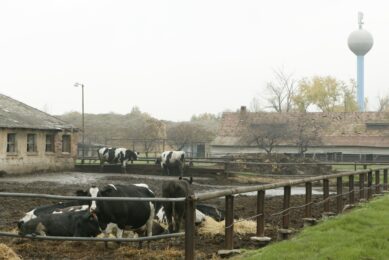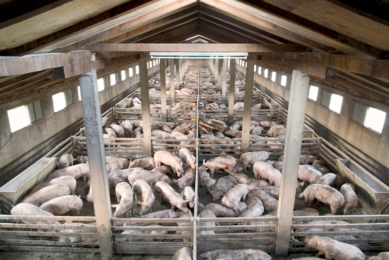How to improve PRRS control in 10 steps

It is time for a deep and thorough review of existing management strategies for PRRS, according to leading US expert Dr Neil DeBuse. Management strategies for PRRS must be closely examined based on new information from Denmark and the US on the recombination of viral isolates in the field.
With regard to current and future control of Porcine Reproductive and Respiratory Syndrome (PRRS), experts such as veterinarian Dr Neil DeBuse at the Minnesota Swine Reproduction Center believe a major change in strategy is warranted. That is, that the use of modified live virus (MLV) vaccines should not be the industry’s primary or only tool for PRRS control.

MLV vaccines contain living, weakened strains of a pathogen, which in theory do not cause disease. However, shedding of the strain from the MLV may occur for a period of 60–90 days following vaccination. It has been known for 20 years, says Dr DeBuse, that PRRSv can undergo recombination events (where in the process of replication of 2 virus strains, a new one is produced by errors or by the event occurring in the same cells and host). In 2019, Danish vets documented the emergence of a novel PRRSv recombinant traceable directly to 2 parent MLV vaccine strains.
Recombination is common
Dr DeBuse believes this sort of recombination event is quite common. “It is my belief that what happened in Denmark is happening every single week in the US,” says Dr DeBuse. “It is because of Denmark’s relatively high national herd health status (about 80% negative or naïve herds there) and the high degree of coordination between professional veterinarians that the recombination event was detected. I think this case points us towards an uncomfortable truth on a global level. That truth is because MLV vaccines represent an important source of new PRRSv strain emergence over time. The industry needs to carefully re-examine knowledge in this area.”
Following the 2019 recombination event in Denmark, a committee of the European Medicines Agency (EMA) reviewed the available data and released its conclusions in April 2021. In short, the benefits of MLV PRRS vaccines continue to outweigh the risks, but additional warnings should be issued in order to continue ensuring the safe use of these vaccines, “in order to limit the opportunity for [them] to circulate and to reduce the risk and the frequency of recombination between PRRS viruses including PRRS vaccine strains”.
What might be done differently to ensure we are not knowingly contributing to potential dual infections in utero during the 20 weeks immediately post-outbreak?
Breakthrough in PRRS
Dr DeBuse says, “I believe our biggest breakthrough in PRRS will come from technologies that enable primary intervention strategies to avoid ‘dual infection’ of sows, piglets yet to be born and piglets still nursing their mothers. As veterinarians, we need to have the discipline to implement new solutions that adhere to that principle – avoiding dual infection.”
Technology exists, according to DeBuse, in established products that could be helpful to avoid the overuse of MLV vaccines in concurrently infected populations. Examples include pharmaceutical products like tilmicosin (Pulmotil, Elanco), which has demonstrated ability to reduce PRRS in the field. Dr DeBuse says that both MJ PRRS vaccines (Phibro) and a novel intranasal vaccine from Aptimmune have clear benefits immediately upon occurrence of new outbreaks.
Dr DeBuse notes that from 2021 to 2031, PRRS virus is expected to cost over US$ 8.0 billion in the US pig industry alone. “I believe we are overlooking the importance of really solving this issue,” he says.
If he could challenge his colleagues, he would ask them, “What might be done differently to ensure we are not knowingly contributing to potential dual infections in utero during the 20 weeks immediately post-outbreak? Can we decrease substantially the occurrence of dual infected neonatal pigs in this time period by taking new approaches?”











